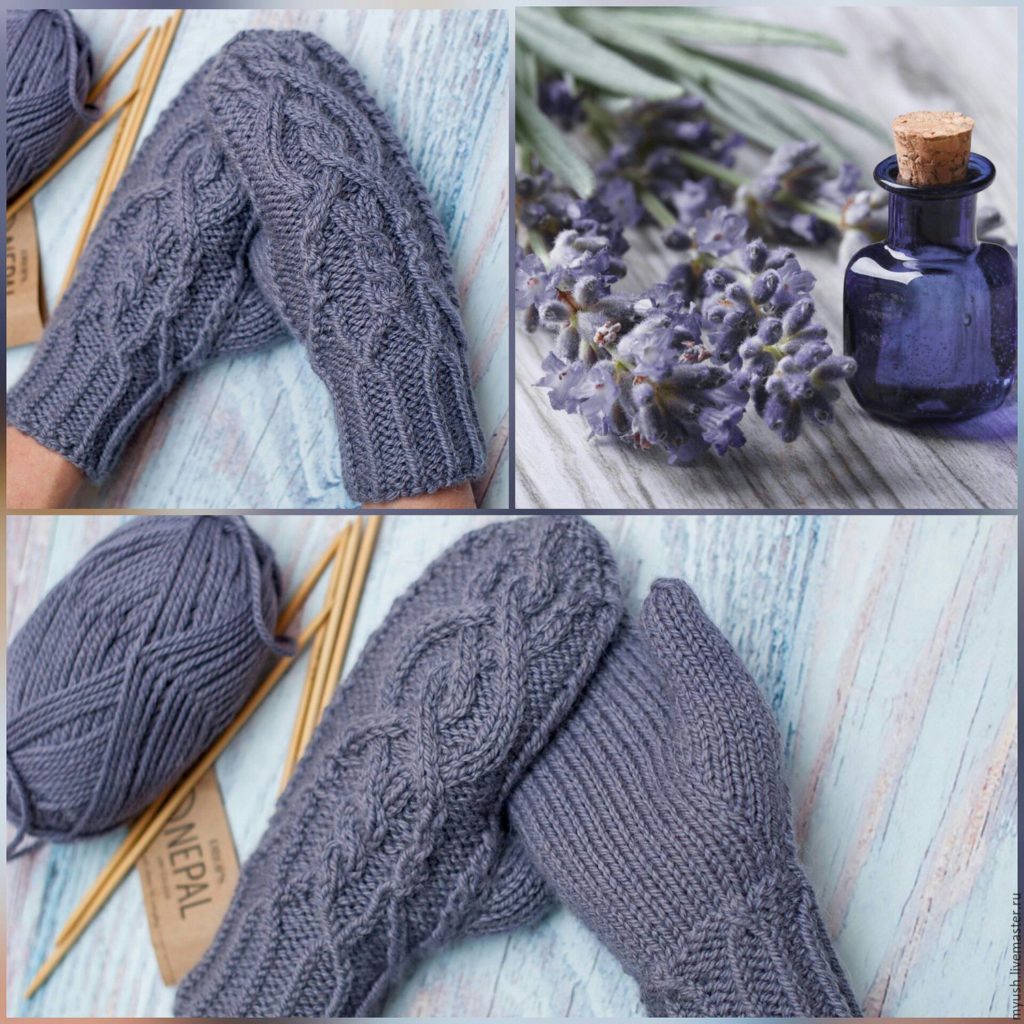Soft, warm in severe frost, mittens are a fashionable accessory that protects your hands from frostbite. Correctly selected yarn will not cause irritation and will “hold” the pattern and shape of the mittens. High-quality thread is not difficult to care for: when worn daily, knitted items should not roll or tear.

It is advisable to take into account the interests of the future owner of the mittens:
- For children who love to have fun in the snow, they need mittens that keep them warm even when wet. The second requirement is that the yarn is hypoallergenic.
- For men, a coarser thread is suitable. If the purpose of the mittens is “winter hunting or fishing,” several types of yarn are used, making the product multi-layered (the inner one is softer, the outer one is thick and rough).
- For women, appearance comes first, so the product is often knitted in 2 threads. Thin down for “fluffiness”, thicker for the beauty of the pattern of “braids” and “bumps”.
Advice. If your child is not allergic to wool, knit mittens several sizes larger from New Zealand yarn, and then felt them in the washing machine. The mittens will be warm and not windy.
The warmest

Knitters choose wool yarn for warmth in winter. Cotton, linen, bamboo, and threads made from other plant fibers are not suitable for winter: in cold weather they cool, not warm. Polyacrylic yarn (trade names - Kurtel, Netron, Acrylic), although it retains heat, becomes stiff in severe frost. Hands get wet and cold.
Sheep's wool
Home-spun yarn is suitable for mittens in ethnic style, a little prickly. After several washes the thread becomes a little softer and fluffier.
Merino wool (merino) is a gift from fine-wooled merino sheep. The spun thread is soft. Yarn made from Australian merino down is more expensive than New Zealand yarn. Therefore, it is specially purchased for elegant sweaters and jumpers, using leftovers for mittens.

Icelandic wool is characterized by softness, elasticity and resistance to moisture. Mittens made from this yarn retain their shape and do not stretch. Suitable for lovers of active winter outdoor recreation.
Goat wool and down
Angora goats give knitters mohair: a soft, thin thread with silky pile. You can knit mittens from this yarn in 2-3 threads, or mixed with non-fluffy natural thread.
Kid mohair is a yarn obtained from the raw materials of the first shearing of kids, often mixed with silk or cotton. The total thread is thin even from 3. Needlewomen, if there is some yarn left, add wool or use it to decorate mittens.

Kashmiri goats provide knitters with cashmere, which is made from the undercoat. But such a thread is almost never found in its pure form.Even if the label says cashmere, the composition will contain sheep wool. The mittens are warm, the thread is good for arans.
Downy goat hair is usually spun onto cotton thread. Cobweb scarves are knitted from the resulting yarn. To knit warm mittens, hand- or industrial-spun wool is added.

Attention. Mohair with acrylic is available on sale: the strength of the thread increases, but the yarn is not suitable for severe frost.
- Camel's wool. If there is a skein left after making a warm blanket, you can knit very warm mittens in a natural color (a palette of brown shades and black). Vicunas do not buy warm and light camel wool specifically for mittens. The thread is spun from thin fibers of spring shearing, the price is high.
- Rabbit fluff. The popular angora is often sold mixed with wool or acrylic thread, since it is low-elastic and is expensive. Although mittens made of angora and wool are warm and fluffy, when worn constantly, the fluff comes out, forming “balls”.
- Llama and alpaca. Suitable for knit, purl and garter stitch without braids or bumps.
- Dog. You can buy pure dog thread secondhand; the industry offers mixed yarn. If the composition contains any other wool, the mittens are warm and non-prickly.
Hypoallergenic
Mittens made from natural alpaca wool are suitable for babies because they do not contain organic fats that cause allergies.
Important. This product is 7 times warmer than sheep wool mittens, which is important for children with weakened immune systems.
Merino is not considered completely hypoallergenic, but the thread is thin and does not irritate the skin. It is also used for children's clothes and for people with sensitive skin.

If you have any doubts, you should consider 50% merino wool yarn. 50% acrylic."Of course, the mittens will be less warm, but a rash will not appear on your hands.
Easy to use
When ease of care is top priority, you should choose synthetic yarn. The cost is lower than wool thread, a large selection of color shades. And during storage, moths will not eat the mittens.
If you expect frequent washing and drying, you should take a closer look at a mixed thread made of wool and acrylic. Then the mittens can be washed in a machine, dried on a hot radiator - the product will not fall off.

Alpaca mittens are considered easy to use. When worn for a long time, they do not fall off or form “balls”. Of course, for washing in a washing machine, select the delicate cycle for woolen items.
But it is better not to use the popular angora for mittens: the thread is difficult to care for, and if it is not dried and washed correctly, the elegant appearance of the product is lost.


 0
0





